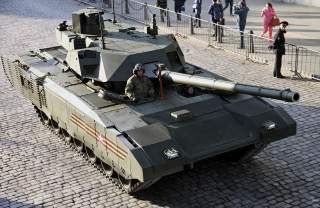If Russia and NATO Went to War Would It Go Nuclear (And Kill Millions)?
Time to think the unthinkable.
One of the limited options cited in the study could include taking huge amounts of time to mobilize and deploy a massive counterattack force which would likely result in a drawn-out, deadly battle. Another possibility would be to threaten a nuclear option, a scenario which seems unlikely if not completely unrealistic in light of the U.S. strategy to decrease nuclear arsenals and discourage the prospect of using nuclear weapons, the study finds.
A third and final option, the report mentions, would simply be to concede the Baltic states and immerse the alliance into a much more intense Cold War posture. Such an option would naturally not be welcomed by many of the residents of these states and would, without question, leave the NATO alliance weakened if not partially fractured.
The study spells out exactly what its wargames determined would be necessary as a credible, effective deterrent.
“Gaming indicates that a force of about seven brigades, including three heavy armored brigades—adequately supported by airpower, land-based fires, and other enablers on the ground and ready to fight at the onset of hostilities—could suffice to prevent the rapid overrun of the Baltic states,” the study writes.
During the various scenarios explored for the wargame, its participants concluded that NATO resistance would be overrun quickly in the absence of a larger mechanized defensive force posture.
“The absence of short-range air defenses in the U.S. units, and the minimal defenses in the other NATO units, meant that many of these attacks encountered resistance only from NATO combat air patrols, which were overwhelmed by sheer numbers. The result was heavy losses to several Blue (NATO) battalions and the disruption of the counterattack,” the study states.
Latvia, Lithuania and Estonia could be likely Russian targets because all three countries are in close proximity to Russia and spent many years as part of the former Soviet Union, the study maintains.
“Also like Ukraine, Estonia and Latvia are home to sizable ethnic Russian populations that have been at best unevenly integrated into the two countries’ post-independence political and social mainstreams and that give Russia a self-justification for meddling in Estonian and Latvian affairs,” the study explains.
The Rand study maintained that, while expensive, adding brigades would be a worthy effort for NATO.
Buying three brand-new ABCTs and adding them to the U.S. Army would not be inexpensive—the up-front costs for all the equipment for the brigades and associated artillery, air defense, and other enabling units runs on the order of $13 billion. However, much of that gear—especially the expensive Abrams tanks and Bradley fighting vehicles—already exists,” the study says.
The actual NATO troop presence in Eastern Europe is something that is still under consideration and subject to change in this new administration. For quite some time, NATO and the US have been considering adding more troops to the Eastern flank as a way to further deter Russia.
The Pentagon’s European Reassurance Initiative, introduced last year, calls for additional funds, forces and force rotations through Europe in coming years, it is unclear what the force posture will ultimately be.
At the same time, the Pentagon’s $3.4 Billion ERI request does call for an increased force presence in Europe as well as “fires,” “pre-positioned stocks” and “headquarters” support for NATO forces.
Officials with U.S. Army Europe tell Scout Warrior that more solidarity exercises with NATO allies in Europe are also on the horizon, and that more manpower could also be on the way.
For example, NATO conducted Swift Response 16 from May 27 through June 26 of last year in Poland and Germany; it included more than 5,000 soldiers and airmen from the United States, Belgium, France, Germany, Great Britain, Italy, the Netherlands, Poland, Portugal and Spain.
This first appeared in Scout Warrior here.
Image Credit: Creative Commons.

